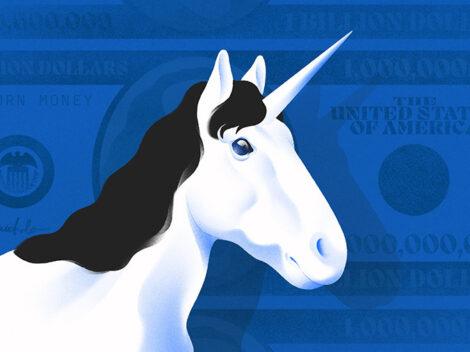Webflow secured a $140 million Series B after it doubled its customer base last year, raising its valuation to $2.1 billion.
Subscribe to the Crunchbase Daily
The round was led by returning investors Accel and Silversmith, and included participation from new investor CapitalG and all existing investors.
The San Francisco-based company allows users to build and design websites without coding. The company—with customers ranging in size from freelancers and small agencies to large enterprises—reached 100,000 paying customers and more than 2 million users last year as more businesses made investments on the digital side during the COVID-19 pandemic.
“There was a huge rush of businesses—that we mainly think of as physical—that invested in digital,” said co-founder and CEO Vlad Magdalin.
Moving past websites
Webflow will use the new proceeds for a variety of initiatives, including adding to the company’s 200-plus employee base, looking at acquisitions and adding new features, Magdalin said. Webflow competes on some levels with companies such as Squarespace and the open-source platform WordPress, he added.
However, the company also will look to expand its offerings beyond helping companies and organizations build websites and into applications, he added. Magdalin founded Webflow in 2013 with the vision of allowing consumers to use technology to build websites without needing to know complicated code, and applications are the next step, he said.
That vision helped attract Accel as an investor, said Arun Mathew, a partner at the firm.
“In general, we can’t think of a bigger market than democratizing software development,” he said.
The time was right to invest with the digital market taking off and with the company outperforming expectations since raising a $72 million Series A in August 2018, Mathew said. Webflow — which has now raised $215 million according to the company—still has yet to use that Series A money, as it was cash flow positive last year, he added.
Attracting interest
As its market has grown, Webflow already has attracted “tons” of acquisition interest from suitors, Magdalin said. However, an M&A exit could curtail the company’s overall vision of allowing everyone to develop application software, he said.
Instead, Magdalin said he looks at Webflow as remaining its own independent company. He pointed to e-commerce giant Shopify as an example of what can be accomplished when a company attempts to democratize a sector to some extent.
Shopify now has a $144.5 billion market cap.
Mathew said he is more concerned with the company continuing on its trajectory than an exit.
“If you do that you will have a ton of options,” he said.
Illustration: Li-Anne Dias.

Stay up to date with recent funding rounds, acquisitions, and more with the Crunchbase Daily.


![Computer generating AI data. [Dom Guzman]](https://news.crunchbase.com/wp-content/uploads/AI-generated-470x352.jpg)
![Illustration of a man sitting on a huge pile o' money. [Dom Guzman]](https://news.crunchbase.com/wp-content/uploads/Giant_Funding-470x352.jpg)


![Illustration of a guy watering plants with a blocked hose - Global [Dom Guzman]](https://news.crunchbase.com/wp-content/uploads/quarterly-global-3-300x168.jpg)
67.1K Followers